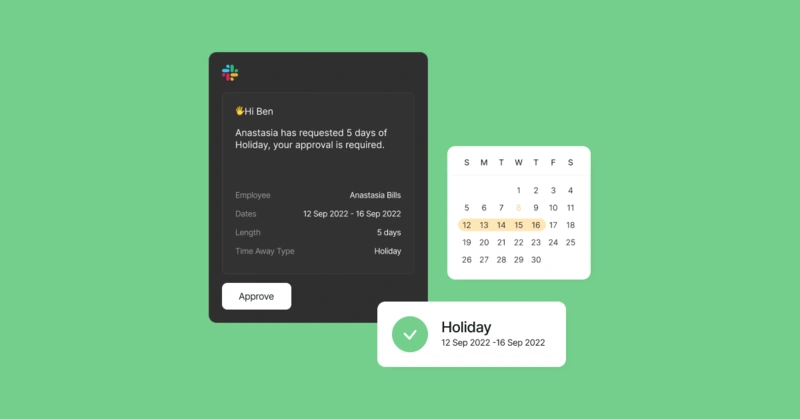Employer guide to On Target Earnings (OTE)
This comprehensive guide aims to boost your understanding of On Target Earnings (OTE), define OTE in practical terms, and illustrate how it contrasts with other salary models to help you make more informed career decisions.

In today’s fast-paced professional world, compensation structures have become increasingly multifaceted. As job seekers and employers navigate offers and salary discussions, terms like OTE, DOE, and a variety of acronyms often emerge. For instance, “OTE meaning” is a google search query that appears frequently among professionals looking for clarity on what it represents within a salary package. And it shows that there is education needed on both employee and employer side on the topic.
Understanding On Target Earnings (OTE)
Before diving into the specifics of how OTE is calculated, it helps to understand what the acronym stands for. OTE stands for “On Target Earnings,” and at its core, it is a compensation model that sets a target for what an employee could potentially earn if they meet or exceed specific performance goals. An OTE salary is especially common in sales, the tech sector, and roles where performance-based incentives play a vital part in overall compensation. The OTE meaning salary model is intended to motivate employees to meet predefined targets, while providing a clear sense of what they can earn by achieving those targets.
In simpler terms, if you see a job posting indicating OTE pay, it means the employer is signaling that your compensation will be composed of a base salary plus variable earnings—often a commission or bonus component—calculated against your success at hitting established benchmarks. For many professionals, the question “what does OTE mean salary” arises when they see a figure listed in a job ad: for instance, “£50,000 OTE” or “$70,000 OTE.” This typically means the total expected earnings, combining both fixed pay and achievable incentives, totals that figure. However, the exact breakdown and feasibility of hitting OTE targets can vary widely from one organization or industry to another.
OTE vs. Traditional Salary Structures
When comparing OTE to a traditional salary, the obvious difference is the inclusion of performance-based compensation in the overall package. A “standard” salary usually reflects a fixed compensation rate per year, month, or hour, with possible bonuses that are often discretionary. OTE, on the other hand, explicitly states the potential total if you meet your targets. This model can be highly appealing to employees who thrive on performance metrics and enjoy being rewarded for exceeding expectations. However, it can also introduce uncertainty if targets are set unrealistically high or in the case that market conditions fluctuate.
Additionally, the phrase “salary OTE” can cause confusion, particularly among those new to roles where a commission or bonus structure is central. The variation in how different employers calculate OTE can also be significant. Some might set conservative and attainable performance metrics, making OTE easier to reach. Others may use aggressive revenue targets that only a small percentage of the team will realistically achieve. Gaining a firm understanding of how each employer calculates on target earnings is indispensable to effectively evaluate a job offer.
How OTE Works Across Different Industries
Though on target earnings mostly appear in sales-related job descriptions, a variety of other roles benefit from commission-based structures. Technology companies, particularly those with subscription-based services, will often employ an OTE salary meaning jobs where your primary function is tied to revenue generation or client-facing responsibilities. For example, an account executive at a software-as-a-service (SaaS) firm might have a base salary plus commission for every new subscription or successfully renewed contract. In this scenario, the “what is OTE salary” question is answered by looking at the fixed base and projected commission amounts combined.
Industries like recruitment, real estate, and insurance also utilize OTE packages to motivate employees to bring in new clients or close deals. These incentives align the company’s success with an employee’s compensation, fostering a sense of entrepreneurial spirit. However, understanding “OTE meaning jobs” requires a degree of caution. An ambitious OTE might look attractive but fail to reflect market realities. In highly competitive industries, the difference between the base pay and an OTE could be tremendous, making the higher figure seem more like a sales pitch than a practical expectation. Therefore, verifying the typical earnings of current employees or the historical data of how many have met the OTE target can offer valuable insights.
Sales, Tech, and Beyond
In general, OTE is widely recognized in sales-focused fields. Sales teams thrive on goal-oriented success, and “OTE salary” announcements are among the most popular forms of compensation to entice high performers. B2B software sales, hardware sales, media ad sales, and recruitment consultants all frequently see “what does OTE mean” queries from job candidates. Meanwhile, in tech roles such as solutions engineers or product evangelists, OTE also appears to acknowledge the portion of compensation linked to performance metrics—like successful product demonstrations or conversions.
Despite its prevalence in these areas, marketing roles and business development positions sometimes incorporate OTE into their compensation plans. These roles often integrate a base salary plus an annual or quarterly bonus tied to campaign outcomes or partnerships established. By understanding up front the “OTE definition,” professionals can gauge if the role is in sync with their personal work style and risk tolerance for variable pay. At times, it might be more beneficial to negotiate a higher base salary instead of gambling on uncertain incentives.
OTE and Salary Negotiations
Whether you are currently employed or seeking a new position, salary negotiations are a pivotal point in securing suitable compensation. If a potential employer brings up “on target earnings,” it is crucial to ask detailed questions. Specifically, you’ll want to clarify how realistic the targets are, whether they have been achieved by a majority of employees, and what the timeline is for evaluating your performance. Additionally, examine whether OTE pay includes straightforward, objective metrics or if it is subject to subjective reviews that could alter your commissions or bonus potential.
Common Misconceptions About OTE
One of the biggest misconceptions about OTE is that it guarantees a specific level of earnings. In truth, OTE can be optimistic and based on ideal circumstances. Employers might post a position listing a high OTE to appeal to go-getters, but the actual earnings might be out of reach if the targets are too ambitious or unattainable. Thus, one should always consider the baseline salary when evaluating an OTE role. This ensures that, even if performance conditions shift outside of your control, the base pay is sufficient for your standard of living.

Another common misunderstanding revolves around “salary expectations gross meaning.” When people see OTE figures, they sometimes assume these are guaranteed totals. The idea of a gross salary, however, usually indicates your total earnings before taxes and other deductions. In the case of OTE, that figure is specifically contingent on reaching performance milestones. You might also see a job listing referencing both “OTE” and “gross salary expectations,” making it essential to ask how the two interplay. Generally, you should treat OTE as a projection or potential maximum, subject to your meeting or surpassing established objectives. This clarity is crucial in shaping realistic salary expectations as you move forward in negotiations.
Setting Realistic Expectations
If you are interviewing for a position that highlights an OTE salary, be sure to ask how many employees currently achieve or surpass that figure. Inquire about the frequency of performance reviews and how targets are set or revised. As many companies now use a performance management system software to track these reviews so it will help you better understand the work environment before joining. If you are joining a sales team, ask for real-life examples. Solid companies are often proud to share success stories of how many individuals hit or exceed their OTE. If they’re unwilling or unable to provide you with concrete data, proceed with caution. Your prospective earnings could hinge on assumptions that may not match the actual work environment.
The Role of DOE in Salary Discussions
Another acronym you might come across is “DOE,” which typically stands for “Depending on Experience.” When employers reference “what does DOE mean in salary,” they are indicating the final offer might vary based on a candidate’s qualifications, track record, skill set, or industry background. This is different from OTE since DOE focuses on adjusting the base pay level itself, rather than setting performance-based targets. Companies often leverage DOE to remain flexible and cater to seasoned professionals as well as newer entrants. It’s important not to confuse the two, since OTE reveals a total potential figure that factors in performance, while DOE is a variation in the base salary determined by the candidate’s expertise.
Maximizing Your OTE
While OTE structures can be daunting, they can also be highly advantageous for driven individuals. If you are someone who relishes competition and sees performance goals as motivational, an OTE arrangement allows you to capitalize on your capabilities. One of the keys to maximizing OTE pay is to fully understand your targets. Clarifying how they are measured—and how frequently they are subject to change—can make the difference between regularly hitting your goals or constantly falling short due to unclear parameters. Once you have transparency, you can map out a structured plan to meet or exceed benchmarks.
Building strong relationships with clients or stakeholders is another way to ensure success in an OTE-based role. Not only does consistent communication help you identify potential up-selling or cross-selling opportunities, but it also positions you as a reliable partner, making customers more inclined to engage long-term. Setting short-term and long-term goals, leveraging mentorship opportunities within the company, and asking for periodic feedback can all help you refine your approach. The better your performance, the closer you inch toward achieving the maximum OTE outlined in your contract.
Strategic Planning for Targets
Successfully operating within an OTE compensation model often requires strategic planning. Treat your targets as if they are small business goals—forecast potential revenue pipelines, stay attuned to market shifts, and always update your approach. In certain industries, seasonal dynamics significantly influence consumer or client behavior, meaning your sales cycle or performance metrics might need to be adjusted throughout the year. If you recognize that target attainment may vary, it is good practice to plan your personal finances around your base salary, viewing OTE earnings as a bonus rather than a guarantee.
Conclusion
Understanding OTE (On Target Earnings) is pivotal for anyone navigating roles that offer a mix of base pay and performance-driven compensation. By internalizing the “OTE meaning,” you become better equipped to interpret job postings, negotiate compensation, and set realistic expectations for your earnings. It is equally vital to differentiate between OTE and other common acronyms, like DOE, which modifies your base salary depending on experience rather than performance. And when you encounter phrases like “salary expectations gross meaning,” knowing that OTE generally refers to potential rather than a sure sum ensures your financial planning remains robust and grounded.
Whether you are an experienced professional comfortable with the highs and lows of commission or someone new to the workforce still exploring compensation models, knowledge is your best ally. Asking targeted questions, clarifying employer expectations, and aligning your performance goals with your career aspirations all serve to optimize your earning potential within an OTE framework. By doing so, you not only safeguard your immediate financial well-being but also lay the groundwork for long-term professional growth, building a track record that will make future roles—OTE-based or otherwise—even more rewarding.
Frequently Asked Questions
What does OTE stand for and what does it mean?
OTE stands for On Target Earnings. It refers to a compensation model where the total earnings include a fixed base salary plus variable components like commissions or bonuses, which are paid if specific performance targets are met.


